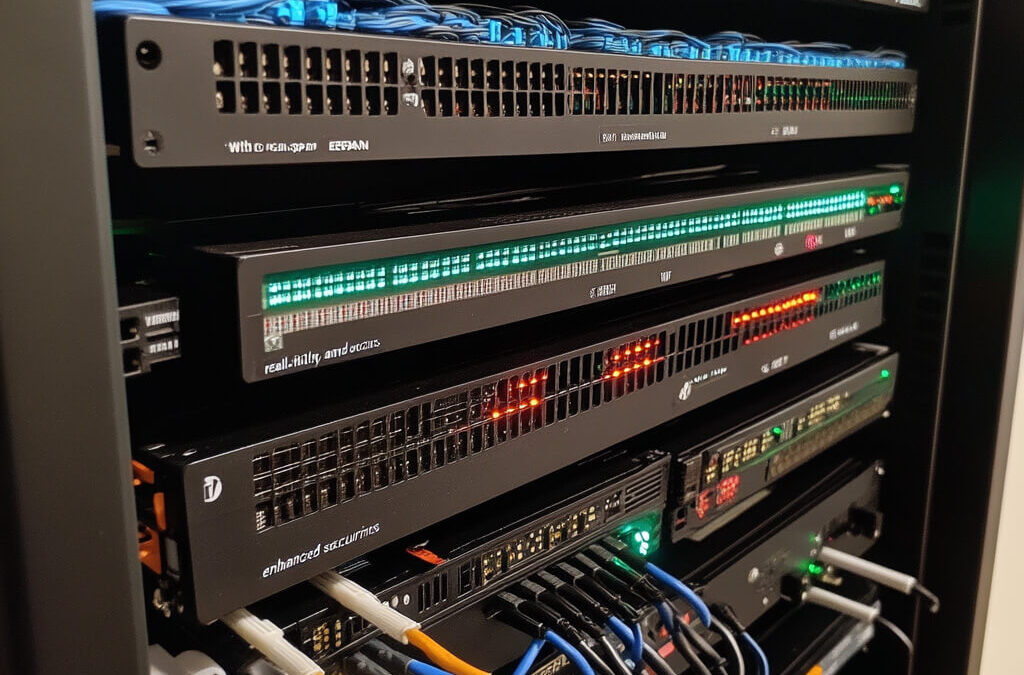Introduction
Purpose: The case study highlights a Wireshark Wednesday event, focused on exploring the ERSPAN (Encapsulated Remote Switched Port Analyzer) technology, and its role in improving network monitoring and packet analysis. The key problem addressed is the evolving need for remote network monitoring, especially in the face of growing cyber threats and distributed network environments.
Focus: This discussion is highly relevant to network administrators and security professionals, as it tackles the crucial task of capturing network traffic for real-time analysis. ERSPAN is an efficient solution for monitoring network traffic remotely, reducing downtime during network incidents, and ensuring faster resolution of cybersecurity issues.
Hook: “In today’s cybersecurity landscape, organizations face an increasing need to monitor and analyze network traffic from remote locations. With ERSPAN, businesses can span network traffic across locations, providing real-time visibility and enhanced security.”
Background & Context
Company/Subject Overview: Wireshark Wednesday is a weekly live-stream event hosted by the Security Institute, designed to help IT professionals explore advanced cybersecurity tools. This particular session focused on ERSPAN, which is increasingly being adopted by major vendors like Cisco, VMware, and Linux to address remote network monitoring needs.
The Problem: Network administrators are faced with the challenge of remotely monitoring network traffic without direct access to physical hardware. As network environments become more distributed and cloud-based, traditional packet monitoring methods struggle to keep up. ERSPAN provides a solution by allowing remote network traffic to be captured and analyzed, ensuring that network administrators can respond swiftly to incidents, even when physical access to network equipment is not possible.
Solution & Implementation
Description of the Solution: ERSPAN enables network administrators to remotely monitor and analyze traffic by encapsulating it within GRE tunnels and forwarding the packets to remote destinations for analysis. This solution allows real-time packet capture without the need for physical access to the devices, making it non-intrusive and highly scalable. The session demonstrated how ERSPAN can be used across different platforms, including VMware, Linux, and Cisco switches, to capture traffic from anywhere in the network.
Implementation Process: The session covered the steps involved in configuring ERSPAN on various platforms. Using a Cisco 9K switch, the presenter demonstrated how to configure ERSPAN by setting up source ports, specifying destination addresses, and using Access Control Lists (ACLs) to filter the traffic. Additionally, the use of GRE tunnels was explained, including the importance of encapsulating each packet and routing it securely across networks. The configuration was tested live, showing how ERSPAN can capture network traffic in real-time.
Results & Impact
Outcomes: By implementing ERSPAN, network traffic was successfully captured and monitored remotely, without the need for intrusive hardware installations. The session demonstrated how network administrators can gain real-time visibility into network events, identify potential security issues, and respond swiftly. The ability to capture packets remotely across different platforms provided flexibility and increased efficiency in managing distributed network environments.
Impact: The broader impact of ERSPAN implementation is the enhanced ability to handle network incidents and cybersecurity threats in real-time. This capability allows organizations to monitor network traffic from anywhere in the world, improving the speed and accuracy of threat detection and incident response. Additionally, the use of ERSPAN reduces the dependency on physical infrastructure, making network monitoring more scalable and efficient.
Conclusion & Future Outlook
Summary: ERSPAN proved to be an invaluable tool for remote network monitoring, offering organizations the ability to capture and analyze network traffic without physical access to the network hardware. This capability aligns with modern network security needs, providing scalability and flexibility in managing distributed environments.
Future Implications: As businesses increasingly adopt cloud-based infrastructures and distributed networks, ERSPAN will become even more critical. The future of network monitoring lies in non-intrusive solutions like ERSPAN, which can scale across global networks. With further developments in technologies like AI and machine learning, ERSPAN’s role in automated network monitoring and cybersecurity will likely expand.
Call to Action: For organizations seeking to enhance their remote network monitoring capabilities, ERSPAN offers a powerful, scalable solution. Visit the Security Institute to learn more about how this technology can benefit your network and security needs. This is the revised version of the transcript following the Harvard Style Case Study format. Let me know if you’d like any further adjustments!









